(An excerpt from Ray Brandes' saga of San Diego guitar hero Jerry Raney and his band that shaped the '70s. Read the full version in Che Underground's Related Bands section.)
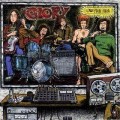 In a 1978 Village Voice editorial, music journalist Lester Bangs proclaimed: “The music business today still must be recognized as by definition an enemy, if not the most crucial enemy, of music and the people who try to perform it honestly.”
In a 1978 Village Voice editorial, music journalist Lester Bangs proclaimed: “The music business today still must be recognized as by definition an enemy, if not the most crucial enemy, of music and the people who try to perform it honestly.”
By the mid-‘70s, multinational corporations had taken control of most of the industry, leaving independent record labels and local music scenes to fend for themselves. Longtime music fan and San Diego expatriate Harold Gee remembers the dismal state of affairs which would ultimately lead to the punk movement: “Everything, from the top down, from radio and all other media was total crap. The problem for me was the disconnect between the music that moved me, which mostly seemed to be either in the past or on jazz records, that only got played in a few people's houses.”
Throughout the ‘70s, however, a few local underground acts had held firmly, David-like in their resistance to the corporate Goliaths. One such band was San Diego’s beloved hard-rock bad-asses Glory, who according to one critic, left “a big greasy mark (and a few stains) on Southern California's rock & roll scene.”
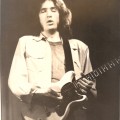 Glory’s main attractions were local guitar hero and future Beat Farmer Jerry Raney; second lead guitarist and keyboardist Jack Butler (rumored to have the longest hair in San Diego); flamboyant front man Mike Milsap; and original Iron Butterfly rhythm section Greg Willis and Jack Pinney.
Glory’s main attractions were local guitar hero and future Beat Farmer Jerry Raney; second lead guitarist and keyboardist Jack Butler (rumored to have the longest hair in San Diego); flamboyant front man Mike Milsap; and original Iron Butterfly rhythm section Greg Willis and Jack Pinney.
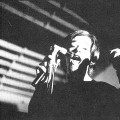 For more than a decade, Glory flaunted their reputation as ne’er-do-well party boys who couldn’t keep a manager for more than a few months at a time. They were regulars at the infamous Balboa Park and La Jolla Cove Love-In concerts, and their rioting fans closed down free concerts at the Starlight Bowl on a number of occasions.
For more than a decade, Glory flaunted their reputation as ne’er-do-well party boys who couldn’t keep a manager for more than a few months at a time. They were regulars at the infamous Balboa Park and La Jolla Cove Love-In concerts, and their rioting fans closed down free concerts at the Starlight Bowl on a number of occasions.
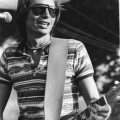 They were the first band to play San Diego Stadium and the first rock-‘n’-roll group to play the Belly Up Tavern. And they opened for a number of major-label acts, including ZZ Top, Canned Heat, Howlin’ Wolf, Bo Diddley, The Electric Light Orchestra, Steely Dan and the James Gang.
They were the first band to play San Diego Stadium and the first rock-‘n’-roll group to play the Belly Up Tavern. And they opened for a number of major-label acts, including ZZ Top, Canned Heat, Howlin’ Wolf, Bo Diddley, The Electric Light Orchestra, Steely Dan and the James Gang.
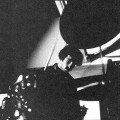 Glory, however, never sold out. The band refused to clean up their act, preferring instead to always do things their own way. As guitarist Jerry Raney puts it, “We were just a bunch of rockers who really didn’t get the big picture.”
Glory, however, never sold out. The band refused to clean up their act, preferring instead to always do things their own way. As guitarist Jerry Raney puts it, “We were just a bunch of rockers who really didn’t get the big picture.”
Ain’t That a Shame?
The Glory story begins with the birth of Jerry Raney in 1951 in the small, dusty, desert town of El Centro in Imperial County, Calif., which shares a border with Mexico to the south and Arizona to the east. The Imperial Valley is farm country, irrigated by water that flows freely from the Colorado River. Thousands of Okies from Midwestern dustbowl farms had migrated to the area in the ‘30s and ‘40s, and by the mid-‘50s, El Centro’s population was just under 15,000. Hotrods cruised Main Street, blasting the rock-‘n’-roll hits of the day, while Mexican migrant workers walked through town, window-shopping the closed stores on Sundays. One of Jerry’s earliest memories is the sound of trucks in the town’s alleys, spraying DDT to combat the insect infestations produced by local farms.
Raney’s family was too poor to own a television, so while their neighbors kept company with the Kramdens and Ricardos, Fats Domino, Chuck Berry and Elvis Presley entered the Raney home in the evenings through the radio. Jerry recalls: “My teenage sisters would have little dance parties with their friends, and I would grease up my hair, try to look like Elvis and rock out with them until they tossed me out.” At eight years old, he joined the Fats Domino fan club at his school and danced to 45s with a dozen teenage girls. “Rock ‘n’ roll ruled my world,“ he says.
In 1963, at 12 years of age, Raney and his family moved to El Cajon, a suburb east of San Diego that in many ways mirrored the small town, agricultural ambience of El Centro. Jerry’s mother was active in the tiny Jehovah’s Witness congregation in El Cajon, and before the school year began at Cajon Valley Junior High, he met Lester Bangs, son of another Kingdom Hall attendee.
Bangs, who would later gain fame as an influential music journalist, burned an indelible image into Jerry’s psyche. “Lester's mom kept her house spotless until you stepped into his room,” Raney remembers. “There were two-week-old bowls of breakfast cereal on the floor and crap all over the place. You couldn't even walk through it without stepping on something. He was the messiest guy I'd ever met.” While Jerry listened to his rock-‘n’-roll records, Lester played his Charlie Mingus, Sonny Rollins and Miles Davis on a dilapidated turntable. The two shared musical influences with each other, but it was Bang’s attitude, however, which impressed Jerry the most.
“Lester wasn't into sports and hated gym class,” Raney says. “Most of the time, he wouldn't participate at all. The way to make up for the lost time was to write a report on sports, and you would get a point-a-page credit. He had missed a lot of class and showed up one day with something about the size of a book entitled ‘Hector the Homosexual Monkey’. He handed it in, and then he was gone.”
Another kindred spirit who became fast friends with Raney was Jack Butler, whose appearance was shocking by 1963 standards. “Jack Butler was one of the first people I met in El Cajon,” recalls Raney. “I remember thinking he looked like some street punk from England.”
In February of the following year, the Beatles arrived in New York City, and El Cajon, like every other town in America, was changed forever. For Jerry, it was an epiphany. “The Beatles just seemed to step in and completely take over the rock-'n’-roll world,” he says. “They played on the Ed Sullivan show on Sunday night, and all anyone at school could talk about the next day was them. The guys that weren't ‘rock ‘n' roll’ didn't like them, but the girls all loved them, and had already picked the ones they were going to marry. As for my friends and me, our lives had just changed big time.”
Raney began to grow out his hair, Beatles-style, and he and Butler began learning guitar together. “Butler’s dad was the gym coach at Greenfield Jr. High, and couldn't stand my long hair,” Jerry says. “We'd be in his room playing guitar, and if his dad came home I'd have to leave. The funny thing about that is when Jack moved out of their house, he grew his hair longer than anyone I knew!”
Raney’s first guitar, a throwaway Japanese model, was traded in for a Fender Stratocaster and ultimately replaced by a Gibson ES335. In three months, Jerry had learned enough guitar to join a band. He met Phil Green, the leader of the Perennials, a dance band whose repertoire consisted of early ‘60s standards like “Louie, Louie”; “Money”; and “What’d I Say.” “Phil was a really good player,” remembers Jerry, “but pretty square.” Raney learned lead guitar basics from Green, and they started the Persuaders together, but “soon enough,” laughs Jerry, “I was kicked out for being ‘too English.’ ”
Raney was now confident enough as a singer and lead guitarist to start his own band, The Jesters, with Bob Friedman on drums, Larry Tanner on bass, Steve Sherwood on sax and Chuck Surface on organ. “After about eight months, Larry quit, I dropped the sax player, talked Butler into playing bass, and Thee Dark Ages were born. We were finally cool!” Jack Butler remembers breaking up the band he was playing in at the time to join Raney’s new group. “Lester and I and two other friends shared a low-rent house next door to a Hell's Angels clubhouse, where we could make lots of noise,” Butler says. “We were a four piece with me on lead guitar and Lester on harmonica. Jerry walked in and said he had booked a four-hour high-school dance gig in three days and needed a bass player. Then he asked me to be the bass player — not our bass player, which was odd and a bit awkward. Even though I really did not play bass, I immediately broke up the band and went out and bought a bass.”
Thee Dark Ages
At a time when most San Diego bands were still playing dance standards, Thee Dark Ages became El Cajon’s answer to the British Invasion, playing songs by the Yardbirds, the Animals, the Kinks, the Young Rascals and the entire first album by Love. Their long hair and Beatle boots made them the coolest band in town. “I remember walking down the street with my guitar and having girls chase after me like a scene from ‘A Hard Day's Night,’ " says Jerry.
Thee Dark Ages easily stood out from the rest of the pack. “There weren't many bands with much originality as far as I could tell,” Raney remembers. “There were a only few of us that had the English four- or five-piece rock style — The Elders, The Voxmen, The Drones, The Delta Blues, and a band called the Magic Mushroom. Most of the other S.D. bands that had any cool at all were the 10-piece soul bands. Essie and the Showmen, with Jack Pinney on drums, were a cool James Brown-type review, and Martha and the Esquires kicked it out pretty well.”
El Cajon’s 800-capacity Hi-Ho Club, which was located at the site of the present day Parkway Bowl, hired Thee Dark Ages as its house band. The Hi-Ho was one of a string of teen clubs, with others in Oceanside and Riverside, Calif., and Yuma, Ariz. According to Raney, “The clubs were mostly dingy, open rooms like you would expect an underground teen club to look like. There weren't many places to sit, not too comfortable. The one that was in El Cajon was the exception. It was an old adult club with nice booths, tables, large dance floor, and high ceilings with swings for the go-go girls. It was a classy place, and was a hugely successful club. It was cool to be the house band in the hottest place around.”
Thee Dark Ages played the Hi-Ho circuit regularly throughout 1965 and 1966, transfixing teen audiences with blues-based garage punk in the vein of the Count Five and the Chocolate Watchband. Occasionally, local eccentric and unofficial member Lester Bangs would join the group onstage to play harp. Butler recalls the scene: “The audience reaction was usually pretty intense,” he says. “We had long hair, and since only rock stars had long hair back then, many thought we were a touring act! We also always dressed like flashy rockers … no blue-jean Southern Rock hillbilly clothes for us. We were only in high school, and we played every Thursday, Friday and Saturday with lines around the block of kids waiting to get in!”
Towards the end of 1966, drummer and former boxer Jack Pinney was playing with bassist Greg Willis, guitarist Danny Weiss and keyboardist Doug Ingle in a group called the Palace Pages. Signed to ATCO Records, they changed their name to Iron Butterfly and moved to Los Angeles, leaving Willis and Pinney behind in San Diego where they elected to finish school. By this time Thee Dark Ages had run their course, so Raney joined forces with the ex-Pages and added Mike Berneathy and Mike Milsap to form a band called Blues Messenger. “It was the beginning of the psychedelic age,” says Raney, “but we were basically a blues-rock band much like The Rolling Stones. Dan McLain and his friends used to call us the American Stones. We would just jam out sometimes with feedback and fuzz.” In 1967, the short-lived Blues Messenger moved to San Francisco, without Pinney. “We didn't last long up there for some reason, but Janis Joplin and her band let us rehearse in their practice hall,” Jerry recalls.
Arriving back in San Diego, Pinney offered Raney a position as lead guitar and singer in a band he had joined, the Roosters, which had released a single the previous year on A&M Records. “The band struck me as corny, but the money was great and so was the bass player, Dick Purchase,” says Jerry. “We were the house band at The Cinammon Cinder and were the band for the vocal groups that toured through town. We played for The Drifters, The Coasters and The Shirelles, to name a few. We would also serve as the opening act for traveling bands like Buffalo Springfield.” The La Mesa club required the band to wear uniforms and perform Paul Revere and the Raiders-style dance steps. Raney did his best to sabotage the performances, sometimes stringing together three fuzz boxes and winging his way through the hits of the day.
“The owner of the club fired me after a while,” says Jerry, “and so I stole the band away. We formed 'Funky Buckwheat,' adding Jack Butler on bass, Richie King on second guitar and vocals, and Chuck Surface on Hammond organ. That band had a good run for about six months.”
The Birth of Glory
Raney’s next band, Glory, would ultimately become the longest-running underground music group in San Diego history. They broke up and reformed a half-a-dozen times, and the lineup changed constantly, but the core of the group comprised Jerry, Butler (who played bass and then later lead and slide guitar and keyboards) and former Palace Pages/Iron Butterfly members Pinney and Willis. Mike Milsap was added to relieve Raney of his singing duties. Among the other players who drifted in and out of the group over the next 10 years were drummer Bruce Morse, guitarist Mike Berneathy, guitarist Jeff Jones, drummer Paul Nichols, steel guitarist Steve Arenz and singer Bobby Bales.
 The band’s set was made up of raunchy arrangements of blues songs by the likes of Slim Harpo and Jimmy Reed; and covers of rock ‘n’ roll songs like Little Richard’s “Keep a Knockin’,” Chuck Berry’s “Little Queenie,” Ray Charles’ “Hit the Road, Jack,” Love’s “She Comes in Colors,” Bob Dylan’s “Just Like a Woman,” the Rolling Stones’ “All Sold Out,” Who Do You Love” and “Roadrunner” by Bo Diddley, and “You’ll Never Do It Baby” and “Come See Me” by the Pretty Things.
The band’s set was made up of raunchy arrangements of blues songs by the likes of Slim Harpo and Jimmy Reed; and covers of rock ‘n’ roll songs like Little Richard’s “Keep a Knockin’,” Chuck Berry’s “Little Queenie,” Ray Charles’ “Hit the Road, Jack,” Love’s “She Comes in Colors,” Bob Dylan’s “Just Like a Woman,” the Rolling Stones’ “All Sold Out,” Who Do You Love” and “Roadrunner” by Bo Diddley, and “You’ll Never Do It Baby” and “Come See Me” by the Pretty Things.
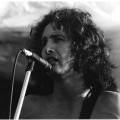 Hitmakers drummer Joel Kmak remembers seeing the band for the first time in 1969: “I was in eighth grade, and I got a tip from my brother Jeff that Glory was playing a block party in El Cajon. I rode my bike down Main Street, following the sound until I found them. Somebody had a stage set up and there were bikers everywhere. They were so loud!
Hitmakers drummer Joel Kmak remembers seeing the band for the first time in 1969: “I was in eighth grade, and I got a tip from my brother Jeff that Glory was playing a block party in El Cajon. I rode my bike down Main Street, following the sound until I found them. Somebody had a stage set up and there were bikers everywhere. They were so loud!
“I remember them playing “Hello Litle Schoolgirl”, and the singer was creeping me out,” he says. “I was a Beatles and Herman’s Hermits freak, and this guy was just dripping with sexual innuendo. I was used to junior-high-school dances. These guys had long, stringy hair; bell bottoms; and were so over the top I had to get the hell out of there! They made a big impression on me.”
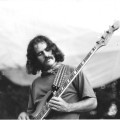 Glory developed a loyal local following, serving as the house band for Jerry Herrera’s Palace (later JJ’s) nightclub on 4025 Pacific Highway, next to the old KGB studios. Harold Gee recalls hearing an unsubstantiated story about a particularly memorable gig at the Palace involving Greg Willis. “Greg’s father was strict,” says Harold, “and he hadn't done the dishes. They were playing The Palace, and this was at the beginning of the hippie era, and all bands were supposed to have long hair, you know, the incoming style at the time. Greg's dad would not allow long hair, so Greg wore a wig onstage, and the club was full and they were in the middle of their gig. But Greg hadn't done the dishes, and his father was pissed. His father showed up at the front of the stage, and gestured to Greg to come over, onstage, and when he got within range, father yanked off his wig, threw it on the ground, and stomped on it!”
Glory developed a loyal local following, serving as the house band for Jerry Herrera’s Palace (later JJ’s) nightclub on 4025 Pacific Highway, next to the old KGB studios. Harold Gee recalls hearing an unsubstantiated story about a particularly memorable gig at the Palace involving Greg Willis. “Greg’s father was strict,” says Harold, “and he hadn't done the dishes. They were playing The Palace, and this was at the beginning of the hippie era, and all bands were supposed to have long hair, you know, the incoming style at the time. Greg's dad would not allow long hair, so Greg wore a wig onstage, and the club was full and they were in the middle of their gig. But Greg hadn't done the dishes, and his father was pissed. His father showed up at the front of the stage, and gestured to Greg to come over, onstage, and when he got within range, father yanked off his wig, threw it on the ground, and stomped on it!”
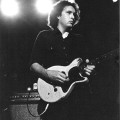 The spotlight, however, always belonged to Jerry Raney, who became somewhat of a local celebrity known for his flashy style and ever-present guitar. “I always played the thing,” he says. “I'd go to parties or picnics and bring my electric with me and just noodle away while hanging out. We would play a show with other bands and while we weren't playing I would walk around in the crowd visiting and noodling! What a weirdo!”
The spotlight, however, always belonged to Jerry Raney, who became somewhat of a local celebrity known for his flashy style and ever-present guitar. “I always played the thing,” he says. “I'd go to parties or picnics and bring my electric with me and just noodle away while hanging out. We would play a show with other bands and while we weren't playing I would walk around in the crowd visiting and noodling! What a weirdo!”
Harold Gee remembers Raney walking around town in a pair of shoes with intricate hand-painted flames on them. “Jerry was always so fuckin' cool, always a very stylin' guy, regardless of the era,” Gee says. “He was always polite to everyone, and he had a mystique that I don't even know if he understood that he had. He did a thing with guitar, using the volume knobs to fade the sound in and out in a really cool way. This all happened back in the days before all the guitar effects pedals, before Jimi Hendrix.”
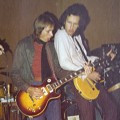 Jack Butler regards Raney as his all-time favorite lead guitarist. “He has a very unique style that does not sound like anyone else,” he says. “I have my own theory on that. In the early days of Glory, he had an old Telecaster that he had chopped up. It had a weak-sounding high E string, so he adapted to this flaw by playing up the B and G strings in a linear fashion, which few guitarists do. In fact, one time he broke the high E string at a gig and decided not to replace it. I believe he played five-string lead for some time, refining his unique lead style. Then when he got a more balanced-sounding guitar he went back to normal six strings, but kept playing with his own approach.”
Jack Butler regards Raney as his all-time favorite lead guitarist. “He has a very unique style that does not sound like anyone else,” he says. “I have my own theory on that. In the early days of Glory, he had an old Telecaster that he had chopped up. It had a weak-sounding high E string, so he adapted to this flaw by playing up the B and G strings in a linear fashion, which few guitarists do. In fact, one time he broke the high E string at a gig and decided not to replace it. I believe he played five-string lead for some time, refining his unique lead style. Then when he got a more balanced-sounding guitar he went back to normal six strings, but kept playing with his own approach.”
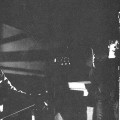 Local journalists and music fans referred to Raney as San Diego’s best guitarist. It was a reputation he relished. “Playing lead guitar in those days was sort of like being a gunslinger,” he says. “Guys you didn't even know would walk up to you and say, ‘I hear you're fast!’ My answer was always, of course, ‘Yeah, I'm real fast!’ ” Raney would often spar with Danny Weiss, Iron Butterfly’s original guitarist. “Everything was always sort of creepy about my relationship with this guy,” he remembers. “It seemed he always wanted to show me up. Once we were up recording at Elektra studios in L.A. and he actually showed up at the end of our session with his amp and guitar and wanted to jam. We did some songs, but he would just get up in my face, stick his chest out, and rip out these hot licks. The guy was really good, but deep down, he knew I just outrocked him and in those days, that was hard for him to take.”
Local journalists and music fans referred to Raney as San Diego’s best guitarist. It was a reputation he relished. “Playing lead guitar in those days was sort of like being a gunslinger,” he says. “Guys you didn't even know would walk up to you and say, ‘I hear you're fast!’ My answer was always, of course, ‘Yeah, I'm real fast!’ ” Raney would often spar with Danny Weiss, Iron Butterfly’s original guitarist. “Everything was always sort of creepy about my relationship with this guy,” he remembers. “It seemed he always wanted to show me up. Once we were up recording at Elektra studios in L.A. and he actually showed up at the end of our session with his amp and guitar and wanted to jam. We did some songs, but he would just get up in my face, stick his chest out, and rip out these hot licks. The guy was really good, but deep down, he knew I just outrocked him and in those days, that was hard for him to take.”
According to San Diego musician Joe Piper, “Jerry’s impressive chops on guitar” were a major reason for the band’s popularity. “He mastered that fluid, sinuous style of seemingly effortless lead runs that was the late-‘60s equivalent of shredding,” says Piper. Buddy Blue, one of the founding members of the Beat Farmers, once expressed his excitement about the opportunity to play with Raney onstage. "Jerry was the top of the heap," said Blue. "He was huge."
Glory plays “Slow Back”: Listen now!
— Ray Brandes
Also by Ray Brandes:
- The Tokyos over San Diego
- The Hitmakers' hit that never was
- Sensational: The All Bitchin' All Stud All Stars and the roots of Country Dick Montana
- The Penetrators: Walking the Beat
- Dream Sequence: The history of the Unknowns
- Let the Good Times Roll: The untold history of the Crawdaddys
- The Zeros: I Don't Wanna Be a Hero, I Just Wanna Be a Zero
- Lend Me Your Comb: A short history of the Hedgehogs